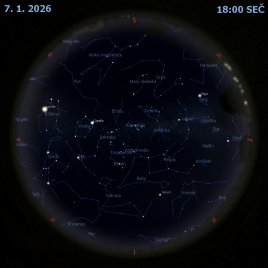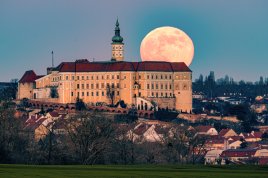Mocniny deseti
Uznání a copyright videa: Charles & Ray Eames (Eames Office)
Jak se liší pohled na vesmír v malém, středním a velkém měřítku? Pěkné srovnání nabízí nejslavnější vědecký krátký film svojí generace. Film Mocniny deseti vznikl původně v letech 1960-tých, nyní byl oficiálně umístěn na YouTube a je vidět nahoře. Klikněte na šipku a sami se můžete na devítiminutový film podívat. Film každých 10 sekund zvětšuje měřítko strany zobrazeného čtverce z deky na pikniku poblíž Chicaga o desetinásobek až ke Kupě galaxií v Panně. Potom se chod zvětšení otočí a každé dvě sekundy se zmenšuje desetinásobně až končí uvnitř jediného protonu. Sekvence Mocniny deseti staví na knize Kosmické pohledy (Cosmic View), kterou v roce 1957 napsal Kees Boeke, stejně jako na podobném, ale většinou animovaném filmu Cosmic Zoom, který také vznikl koncem let 1960-tých. Změny perspektivy jsou natolik úchvatné a poučné, že byly znovu vytvořeny za pomoci modernějších počítačových technik, včetně prvních několika minut filmu Contact a krátkého digitálního videa zvaného Známý vesmír (The Known Universe) vytvořeného v roce 2010 pro Americké muzeum přírodní historie. Tvůrci filmu, Ray Eames a její manžel Charles byli známi svým vizionářským duchem a dokonce i vynalezli své vlastní populární křeslo.
NASA Official: Phillip Newman Specific rights apply. NASA Web Privacy Policy and Important Notices
A service of: ASD at NASA / GSFC & Michigan Tech. U.
Odkaz na originální APOD


